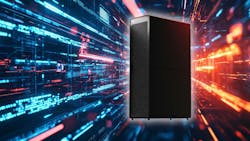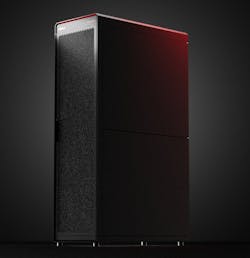Cadence Supercomputer Designed with Blackwell Architecture
What you'll learn:
- Details about Cadence's Millennium M2000 supercomputer.
- How the supercomputer takes advantage of NVIDIA's Blackwell architecture.
- Potential applications for the platform.
Cadence Design Systems’ new Millennium M2000 Supercomputer is a high-performance computing platform designed in collaboration with NVIDIA. The supercomputer, unveiled at CadenceLIVE Silicon Valley 2025, takes advantage of NVIDIA's Blackwell architecture, including HGX B200 systems and RTX PRO 6000 Server Edition GPUs. It provides up to 80X the performance and 20X the energy efficiency of traditional supercomputer platforms.
According to Cadence, the M2000 (see figure) is designed to drive complex simulations across multiple industries, including semiconductor design, aerospace engineering, and biotechnology. The platform combines Cadence's computational software with NVIDIA's CUDA-X libraries, allowing it to perform tasks such as electronic design automation (EDA), system design and analysis (SDA), and molecular modeling.
It can also create digital twins and simulate real-world conditions for autonomous systems. Thus, the supercomputer is well-suited for augmenting the design process in a wide range of industries.
The Millennium M2000 supports both cloud-based and on-site deployments, which provides a level of flexibility for customers. According to NVIDIA, the company plans to utilize 10 M2000 units to help develop next-gen chips and AI data-center infrastructure.
"The Millennium M2000 Supercomputer will drive the next leap in AI-accelerated engineering by leveraging our massively scalable solvers, dedicated NVIDIA Blackwell-accelerated computing, and AI to help designers continue to push the limits of what is possible," said Anirudh Devgan, president and CEO of Cadence.
He added, "Purpose-built for the most advanced AI models of today and tomorrow, the Millennium M2000 Supercomputer delivers unprecedented designer productivity to propel the next generation of AI infrastructure, physical AI systems, and drug discovery."
About the Author
Cabe Atwell
Technology Editor, Electronic Design
Cabe is a Technology Editor for Electronic Design.
Engineer, Machinist, Maker, Writer. A graduate Electrical Engineer actively plying his expertise in the industry and at his company, Gunhead. When not designing/building, he creates a steady torrent of projects and content in the media world. Many of his projects and articles are online at element14 & SolidSmack, industry-focused work at EETimes & EDN, and offbeat articles at Make Magazine. Currently, you can find him hosting webinars and contributing to Electronic Design and Machine Design.
Cabe is an electrical engineer, design consultant and author with 25 years’ experience. His most recent book is “Essential 555 IC: Design, Configure, and Create Clever Circuits”
Cabe writes the Engineering on Friday blog on Electronic Design.


